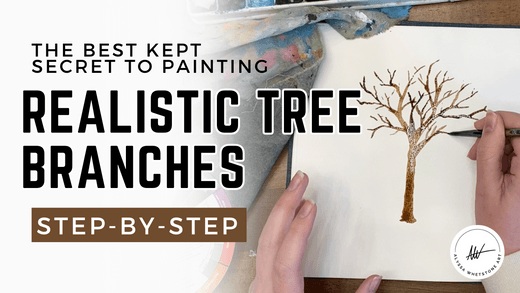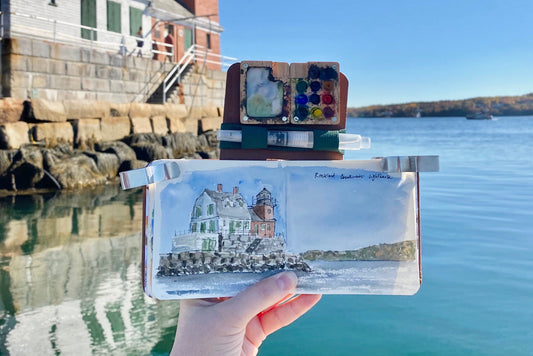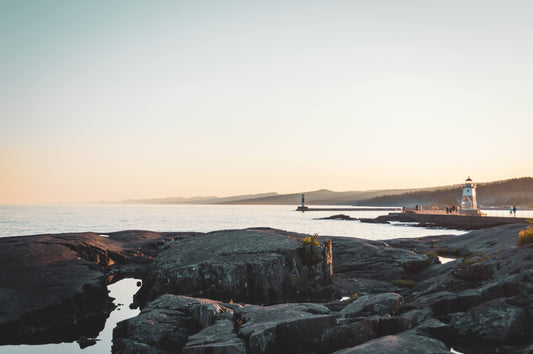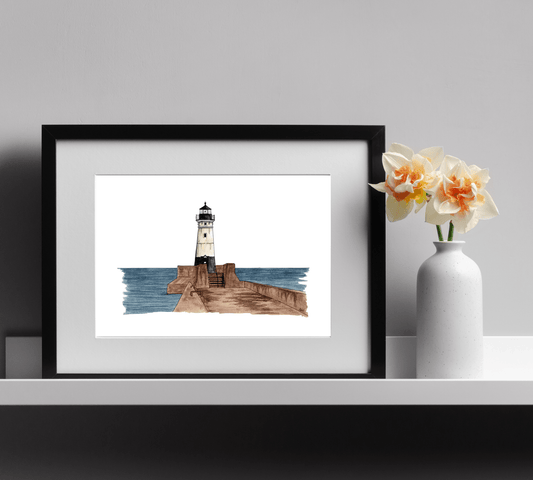
The Secret Behind Painting Watercolor Tree Branches
Share
Nature Isn’t Perfect—And That’s the Beauty of It
Have you ever felt stuck trying to create a "perfect" painting? Maybe you've erased a line over and over, trying to make it straight or symmetrical, only to feel frustrated with the outcome. If that sounds familiar, I have good news for you: nature isn’t perfect—and your art doesn’t have to be either.
In fact, embracing the imperfections in nature can make your paintings feel more alive and authentic. Think about the trees you see on a walk. Are their branches ever perfectly straight? Probably not.
They’re wiggly, uneven, and full of character. And those quirks are exactly what make them so interesting to paint.
In my latest YouTube tutorial, I’ll show you how to let go of perfectionism and enjoy the process of painting with wiggly, free-flowing lines.
This simple watercolor tutorial for beginners is a fun and freeing way to capture the essence of nature—and it’s often much more realistic than trying to force your lines to be "just right."
Why Wiggly Lines Work
-
They’re Natural: When you look closely at leaves, flowers, or tree bark, you’ll notice that very little in nature is perfectly symmetrical. Wiggly lines mirror the organic shapes we see in the real world.
-
They’re Fun: Painting loose, wiggly lines can be a playful, stress-free experience. You don’t have to overthink or worry about "mistakes." Instead, you can let your brush flow and see what happens.
-
They Add Character: Those imperfect lines and shapes give your painting personality. They make your work uniquely yours.
Watch the Tutorial
In the tutorial, I walk you through painting a simple subject using wiggly lines and organic shapes. You’ll see how I embrace the imperfections and use them to create a piece that’s both fun and realistic.
I also cover some helpful techniques for painting tree branches. You’ll learn how to use the shapes of the letters "Y" and "V" to split each branch into smaller ones, and how to make branches look natural by starting thicker near the trunk and getting skinnier as they extend outward.
These techniques will help you achieve a realistic branch painting that mirrors the organic flow of nature. Whether you’re new to watercolor or looking for a fresh perspective, this video is for you.
Watch the tutorial on YouTube here!
Try It Yourself
Next time you sit down to paint, try this:
-
Choose a natural subject, like a flower, leaf, or tree.
-
Instead of sketching with perfectly straight lines, let your hand move freely. Don’t worry if your lines are uneven or wiggly—embrace it!
-
Use the "Y" and "V" technique to split branches as you paint, starting with thicker lines near the trunk and tapering them as they extend outward. This approach is perfect for capturing organic shapes in watercolor art.
-
As you paint, focus on capturing the overall feeling of your subject rather than its exact details.
You might be surprised at how much more relaxed and enjoyable the process becomes.
In this tree branch tutorial I only needed two round brushes. They were from my favorite set that you can get here on amazon. I may earn a small percentage of the sale when you use my link to buy.
Share Your Work
I’d love to see how you embrace wiggly lines in your own paintings! Feel free to share your work and tag me on Instagram @alyssawhetstoneart. Let’s celebrate the beauty of imperfection together.
Happy painting!
-Alyssa
*as an amazon affiliate I may earn a small percentage of the sale when you use my link to buy.



